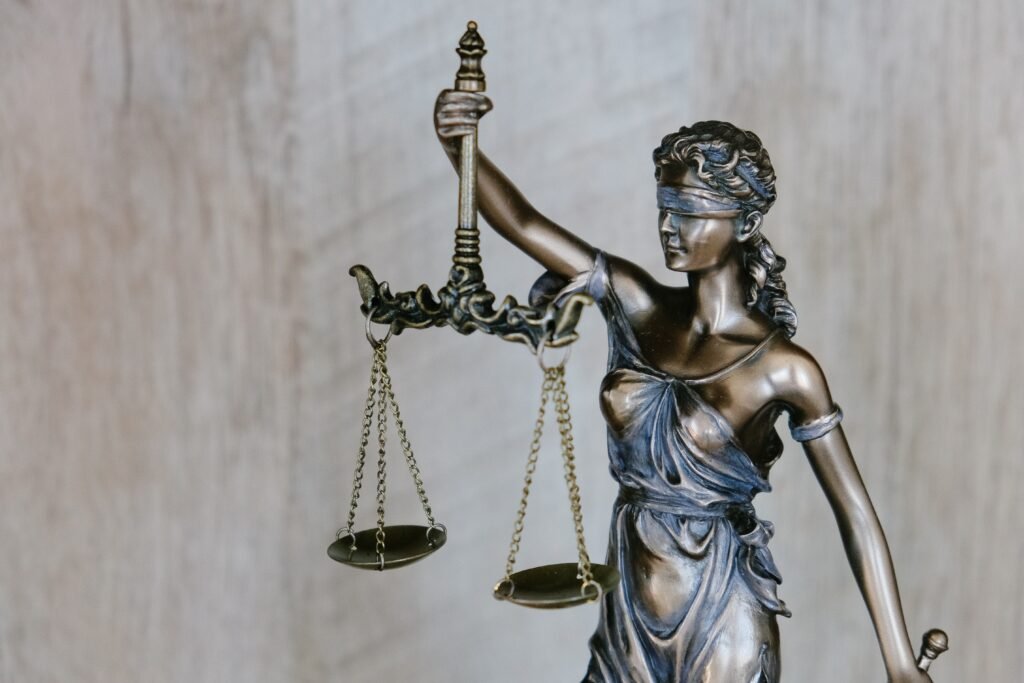lease agreements can be confusing, especially if you’re not familiar with the legal jargon involved. But fear not, because this comprehensive guide is here to help you navigate through the intricacies of lease agreements with ease. From understanding the key terms and clauses to knowing your rights and obligations as a tenant, this article will provide you with all the essential information you need. So whether you’re a first-time renter or a seasoned tenant, grab a cup of tea, sit back, and let us break down the complexities of lease agreements for you. By the end of this guide, you’ll be well-equipped to confidently sign your next lease agreement, knowing exactly what you’re getting into.

Understanding the Basics of Lease Agreements
A lease agreement is a legally binding document that outlines the terms and conditions of a rental arrangement between a landlord (the property owner) and a tenant (the individual or business renting the property). It serves as a contract that establishes the rights, obligations, and responsibilities of both parties.
Lease agreements are crucial in ensuring a smooth and harmonious rental experience for both landlords and tenants. By clearly defining the terms of the lease, it helps to avoid misunderstandings, disputes, and legal complications that may arise during the rental period.
In a lease agreement, there are typically two main parties involved – the landlord and the tenant. The landlord owns the property and is responsible for maintaining it, while the tenant has the right to occupy and use the property in accordance with the terms of the lease agreement.
Types of Lease Agreements
There are several different types of lease agreements, each with its own set of characteristics and purposes. The most common types include residential lease agreements and commercial lease agreements.
Residential lease agreements are used for renting out residential properties such as houses, apartments, or condominiums. These agreements often cover matters such as rent amount, duration of the lease, and rules for living in the property.
On the other hand, commercial lease agreements are used for renting out commercial properties such as offices, retail spaces, or warehouses. These agreements may include additional clauses related to the specific needs of businesses, such as provisions for signage, parking, or restrictions on certain activities.
Within these types, there are also variations in how the rent is calculated. A gross lease agreement typically includes all operating expenses, such as utilities and maintenance costs, in the rent amount. In contrast, a net lease agreement requires the tenant to pay separate costs for utilities and maintenance.
Another variation is a modified gross lease agreement, which is a combination of both gross and net leases. In this type of agreement, certain expenses may be shared between the landlord and tenant.

Essential Elements of a Lease Agreement
To ensure a lease agreement is legally valid and enforceable, it must include certain essential elements. These elements provide clarity and protection for both parties involved.
Firstly, the lease agreement must clearly state the names of the landlord and the tenant. This ensures that both parties are identified correctly and can be held accountable for their obligations under the agreement.
Next, a description of the property being rented should be provided. This includes details such as the address, size, and condition of the property, enabling both parties to have a clear understanding of what is being rented.
The term of the lease, or the duration of the rental period, is another essential element. It specifies the start and end dates of the lease, allowing both parties to plan their commitments accordingly.
The amount of rent and the frequency of payment should also be clearly stated in the lease agreement. This ensures that there is no ambiguity regarding the financial obligations of the tenant.
Lastly, the lease agreement should include details about the security deposit, such as the amount required and the conditions under which it will be returned. This protects the landlord by providing a financial cushion in case of any damages or unpaid rent at the end of the tenancy.
Rent Amount and Payment Details
Determining the rent amount is an important aspect of a lease agreement. It can be based on various factors, such as the current market rates for similar properties, the condition of the property, and any additional amenities or services provided.
The lease agreement should also specify the due date for rent payments. This ensures that the tenant knows when the rent is expected and helps to establish a clear payment schedule.
In terms of payment methods, the lease agreement should outline the acceptable modes of payment. This can include options such as bank transfer, cash, or cheque. By clearly defining the accepted methods, both parties can avoid any confusion or disputes regarding payment.
Late payment penalties are another crucial aspect to consider. The lease agreement should clearly state any penalties or fees that may be imposed for late rent payments. This encourages timely payment and provides a consequence for non-compliance.
Additionally, some lease agreements may include provisions for rent increases. These clauses typically outline the conditions under which the landlord can raise the rent, such as a certain percentage increase or a specific notice period.

Property Maintenance and Repairs
Responsibility for property maintenance is an essential aspect of any lease agreement. It is important to clearly define who is responsible for routine maintenance tasks, such as gardening or cleaning common areas.
Moreover, the concept of normal wear and tear should be addressed in the lease agreement. Normal wear and tear refers to the expected deterioration that occurs from everyday use of the property. It is generally the landlord’s responsibility to handle repairs resulting from normal wear and tear, while the tenant is responsible for damages beyond this scope.
For major repairs and renovations, the lease agreement should establish guidelines for both parties. This includes defining the limits on the tenant’s ability to make alterations to the property and outlining the process for obtaining the landlord’s approval for any changes.
Furthermore, it is essential for tenants to report any damages or malfunctions promptly to the landlord. This allows the landlord to address the issues in a timely manner, minimizing further damage and ensuring the safety and livability of the property.
Tenant and Landlord Rights and Responsibilities
Lease agreements outline the rights and responsibilities of both tenants and landlords. It is important for both parties to understand their respective rights and obligations to ensure a fair and harmonious rental experience.
Tenants have the right to a safe and habitable living space. This includes ensuring that the property is free from any health hazards, complying with building codes and safety regulations, and providing essential amenities such as heating, electricity, and water.
In return, tenants also have certain responsibilities. This may include paying rent on time, properly maintaining the property, and adhering to any rules or regulations set forth by the landlord or property management.
On the other hand, landlords have the right to collect rent, ensure that the property is used for its intended purpose, and request reasonable access to the property for inspections or repairs.
In terms of responsibilities, landlords are responsible for maintaining the property in a good state of repair, ensuring the property is in compliance with local laws and regulations, and addressing any issues or complaints raised by the tenant.
Termination and Renewal of Lease Agreement
The termination and renewal of a lease agreement can be a significant decision for both parties. Understanding the process and requirements is crucial to avoid any legal disputes or complications.
Termination by mutual agreement occurs when both the landlord and tenant agree to end the lease before it reaches its natural end date. This can be done through negotiation and a formal agreement between both parties.
Termination due to breach of contract may happen if one party fails to fulfill their obligations as outlined in the lease agreement. This could include non-payment of rent, unauthorized occupancy, or significant damages to the property.
If both parties wish to continue the lease, the renewal process should be clearly outlined in the lease agreement. This includes specifying the notice period required for renewal and any changes to the terms or conditions that may apply.
Additionally, the lease agreement should establish the notice period required for termination. This ensures that both parties have sufficient time to make alternative arrangements and helps to minimize any disruptions.
Dispute Resolution in Lease Agreements
Disputes may sometimes arise between landlords and tenants, and it is important to have a mechanism in place to address and resolve such conflicts. Lease agreements can include provisions for dispute resolution to provide a structured approach to resolving conflicts.
Negotiation is often the first step in resolving disputes. This involves both parties discussing the issue and attempting to reach a mutually agreeable solution. This informal approach can often resolve conflicts amicably and avoids the need for formal intervention.
If negotiation fails to resolve the dispute, alternative dispute resolution mechanisms can be employed. These mechanisms, such as mediation or arbitration, involve a neutral third party facilitating the resolution process.
In some cases, legal action may be necessary to resolve a dispute. This typically occurs when all other attempts at resolution have failed. It is important for both landlords and tenants to understand their legal rights and obligations and seek professional legal advice before pursuing legal action.
Special Clauses in Lease Agreements
Lease agreements may include special clauses that address specific issues or requirements. These clauses help to customize the agreement to suit the unique circumstances of the rental situation.
A common special clause is a pet policy, which outlines the rules and restrictions regarding pets in the rental property. It may specify the types of pets allowed, any size or breed restrictions, and any additional fees or deposits associated with having pets.
Another special clause is subletting and assignment. This allows the tenant to transfer their lease to another party, either temporarily (subletting) or permanently (assignment). The clause may outline the conditions or restrictions that apply to such transfers.
The right of entry by the landlord is another important special clause. It defines the circumstances under which the landlord can access the property, such as for repairs, inspections, or emergencies. It also states the notice period required for such access.
Modifications and alterations to the property is another area that may be addressed in a special clause. It outlines the conditions under which the tenant can make changes to the property, such as painting or installing fixtures, and whether prior approval from the landlord is necessary.
Seeking Legal Advice when Entering Lease Agreements
When entering into a lease agreement, it is crucial to seek legal advice to ensure your rights and interests are protected. A lawyer specializing in landlord-tenant law can review the lease agreement and provide guidance on its terms and conditions.
Legal advice is important to fully understand the implications of the lease agreement and any potential risks or pitfalls. A lawyer can explain the legal terminology, clarify any ambiguous clauses, and ensure that the agreement complies with applicable laws and regulations.
By understanding your rights and obligations before signing the lease agreement, you can make an informed decision and prevent any potential legal disputes. Legal advice provides an added layer of protection and helps to ensure a fair and transparent rental experience.
In conclusion, lease agreements serve as vital tools in establishing a clear and mutually beneficial rental arrangement between landlords and tenants. By understanding the basics of lease agreements, the types of agreements available, and the essential elements they should contain, both parties can enter into a rental agreement with confidence. It is important to outline rent amount and payment details, address property maintenance and repairs, establish tenant and landlord rights and responsibilities, understand the termination and renewal process, have mechanisms for dispute resolution, include special clauses tailored to the specific situation, and consider seeking legal advice to ensure a comprehensive understanding of the lease agreement. With a well-drafted and understood lease agreement in place, both landlords and tenants can enjoy a harmonious and successful rental experience.
